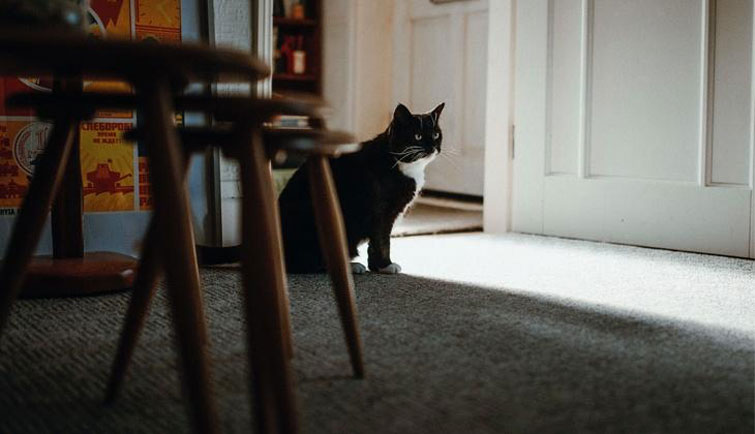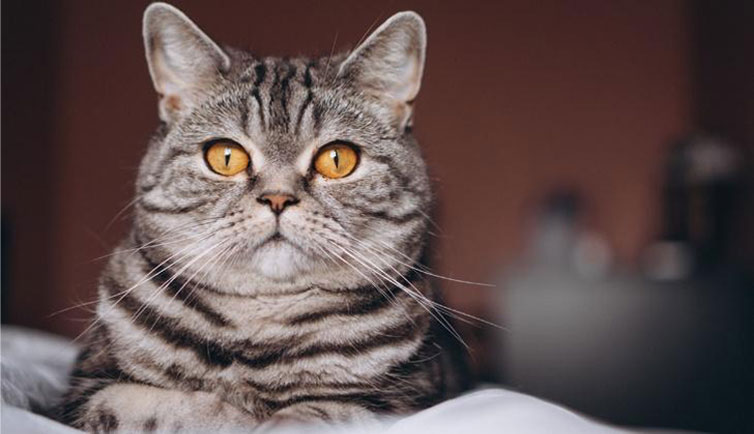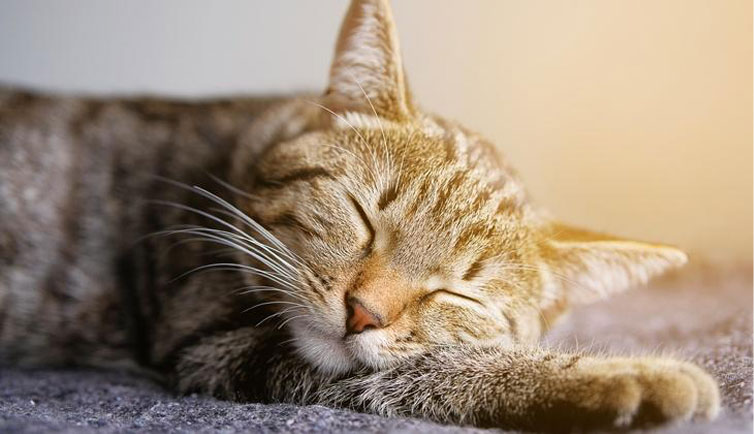Cat Aging: Caring for Your Senior Cat in Their Golden Years
Just like humans, cats seem to be living longer and longer thanks to advanced veterinary care and optimal nutrition. Read on to learn how to best care for your old cat during their golden years.
CATS

Posted by bravectosouthafrica – 14 September 2020
Ensuring a Long and Happy Nine Lives for Your Feline Friend
Most of the world’s cat owners are fortunate, as it’s not an uncommon occurrence for modern indoor cats to live well into their twenties. Despite their prolonged lifespan, our feline friends can be classified as ‘senior’ already when they reach between 7-10 years of age.
Aging in cats is similar to aging in humans in that each cat will experience growing older differently. One cat may seem sluggish and old when they are only seven, while another cat may still be lively and playful as a kitten at eleven. It is important for owners to keep in mind that aging is a natural process during which certain health conditions may rear their head. Many of the conditions can’t always be cured, but they can be managed.
To ensure that your older cats enjoy the healthiest and best quality of life possible, it’s key that you:
- recognise and minimise any factors that may lead to possible health risks,
- maintain or improve the health of your cats’ current body systems,
- identify signs of disease at an early stage and
- take your cats to the trusted local veterinarian for regular check-ups.
It’s a good idea to familiarise yourself with the typical signs of aging in cats.

How to Recognise the Signs of Aging in Cats
As previously stated, all cats are unique and may not show the same aging behaviours. There are, however, some common characteristics you may notice in older cats, which include:
- Stops coming when called
- Noticeable changes in their eating and/or sleeping habits
- Starts meowing much more frequently
- Begins to miss the litterbox or just stops using it overall
- Starts to avoid their favourite resting spot(s) and hides away instead
Please note that any behavioural changes you notice in your cat may not necessarily be age-related. If you notice any changes in the normal behaviour or health of your cat, seek veterinary help as soon as possible, regardless of your cat’s age. Go to the vet, where they will be able to diagnose or rule out any underlying disease(s).

What Happens During Cat Aging?
As your cat grows older, their body’s performance will start to wind down. As their immune system isn’t quite what it used to be, they also become more susceptible to illness. Your older cat may start to experience some of the following maladies:
- Changes in the brain – Like humans, older cats can come to suffer from age-related changes to the brain, commonly known as ‘senility.’ In your cat, these issues may present themselves through aimless wandering around, excessive vocalisation, the avoidance of social interactions and/or general disorientation.
- Changes to the eyes – You may start to notice a hazy-look in your cat’s eye lenses. This doesn’t necessarily affect their eyesight.
- Changes to hearing – For a multitude of reasons, loss of hearing is a common sign of aging in cats.
- The development of diabetes, hypertension and/or an overactive thyroid – Senior cats can often develop (some of) these potentially lethal diseases.
- Thinning of the skin – Senior cats commonly struggle with a thin skin and it can lead to more frequent skin infections, as well as reduced blood circulation.
- Kidney problems – Kidney disease is a common issue found in cats, especially older ones. These issues present themselves through various symptoms.
- Dental problems – This often painful problem is quite common amongst senior cats. Dental issues can interfere in the cat’s normal eating and grooming routine.
- Grooming problems – Both dental issues and arthritis may cause your older cat to struggle to maintain their coat as well as they once did. This ineffective grooming may lead to matting of the coat, unpleasant smells, and a case of skin inflammation.
- Degenerative diseases – Some age-related afflictions like arthritis and joint disease are common amongst older cats, but tend to be hard to assess. You may notice your cat experiencing difficulty accessing their food bowl, litterbox and favourite chill-out spots. They may also get tired faster than before and be less playful.
- Dehydration – Your senior cat may be experiencing dehydration as a result of various different ailments. It may lead to a weakened immune system and poor blood circulation. Take note that dehydration can also be a sign that your cat is experiencing a deeper issue.
- Claw weakness – Finally, you may notice that your old cat’s claws have grown weak. They may also be more brittle than before if proper maintenance isn’t done.

Keeping Your Aging Cat Thriving
Senior cat care consists of three key elements. They are:
- The proper nutrition
- Enough exercise
- Feelings of security
If you ensure your cat enjoys these fundamentals, you will give them the best chance of living a full and a happy life well into their advanced years.
What Is the Best Food to Feed an Aging Cat?
When your cat is getting on in years, it’s best to consult with your veterinarian on what diet changes to make to ensure they remain in top condition. Usually, a diet that promotes metabolism while remaining gentle on the cat’s organs is the way to go.
Cats around the 7-12 year age bracket are often predisposed to gaining weight, so keeping a close eye on their diet is especially important to prevent them from becoming overweight or even obese. Being overweight or obese can lead to your cat developing other health conditions such as diabetes and joint issues. On the other hand, there are plenty of cats that start losing weight after the age of twelve. The cat that starts losing weight should also be evaluated by their trusted vet to catch any developing issues early on.
Exercise and the Aging Cat
Getting enough exercise is an important part of any cat’s lifestyle, no matter what their age. Remaining active is especially crucial for older cats – it can even be likened to the fountain of youth – as exercise keeps muscles strong, helps maintain good circulation, protects joints, promotes a healthy metabolism and keeps your cat in a good physical condition.
With a cat that has already started showing signs of lethargy, food games can be just the right motivation to get moving again. For one, you can spread treats throughout the room so your older cat has to move around a bit and engage their smell senses to find each yummy bite. Alternatively, you can also place some dry food inside a food ball or related toy that encourages the cat to play with it, before it releases any of the treats.
There are plenty of interactive games like laser/light on the wall and cat charmers that can motivate your cat to move without the need for food rewards. A complete unwillingness or inability to move and any movement restrictions or disorders are usually not part of typical old cat behaviour. These may, in fact, be indications of an underlying disease.
Give Your Older Cat Some Extra TLC
A cat that has gotten a little on the older side has a far greater need for security. If you give them a little extra tender loving care, they will be all the happier for it (it really goes a long way). Senior cats are mostly creatures of habit. They are much likelier to seek attention and the closeness of their family members/owners. Older cats just can’t get enough of your caresses.
Old cats truly enjoy resting in warm places. Consider moving their bed or perhaps a favourite blanket or pillow to a nice and cosy spot in the house. Make sure there aren’t any drafts, though – your kitty wants warm, not overly hot.
As mentioned before, your cat may start struggling to groom themselves as efficiently as they once did in their advanced age. Help your cat feel purrfect again by treating them to gentle brush massages. This will help them feel good and give them back some of their fur’s previous lustre.
It’s important to take the necessary measures to ensure that a cat is comfortable and safe in their home as they age. This will go a long way towards the cat’s continued wellbeing. As you notice changes in your cat’s mobility, be sure to make their life easier by getting lower litterboxes and placing their food bowls in easily accessible locations. You might also want to start considering ways in which you can help your cat up onto their favourite sofa or chair, should it become too much of a challenge without assistance.

Knowing the Difference Between Sickness and Old Age in Cats
Cats naturally grow calmer and love to sleep more with age. There are, however, some changes in a cat’s behaviour that can be indicative of an illness and should never be ignored. Some diseases a cat is predisposed to in old age have symptoms that emerge so gradually and are so unnoticeable that even good pet owners miss the warning signs.
This is why it’s so important never to assume that any changes in your feline friend’s behaviour or routine are just inevitable signs of aging. The older the cat, the more important it gets to have them checked over by a vet regularly to ensure they enjoy many more happy and healthy years with their families.
Bravecto® for cats helps you keep your kitty in wonderful condition throughout their lives by freeing them of nasty ticks, fleas and ear mites. With Bravecto® Spot-On for cats, fleas and ticks will be kept at bay for three months, all in one single dose! The all-new Bravecto® Plus for cats not only protects against ticks and fleas for 3 months but also treats worms, ear mites, and prevents heartworm disease. Either treatment is fast-acting and long-lasting because Bravecto® cares for both you and your pet.
Subscribe to our Newsletter
Get to know your furry friend better! Sign up for all things dog- or cat-related.
The Hairy Facts about the dreaded hairball
12 April 2021
Help! My dog’s barking mad! Volume 2
12 April 2021
Your Itchy, Scratchy Cat – All About Cat Skin Problems
12 April 2021
The Dog’s Diet: A Bone of contention?
01 April 2021
Mango Fly Worms: How to Spot and Eliminate them
Posted on November 28,2019
Managing Mange And Mites In Your Dog
Posted on June 11,2018
Why Do Cats Purr and How? Learn What Your Cat Is Saying
Posted on October 14,2020
How to Get Rid of Ear Mites in Dogs
Posted on November 06,2019









